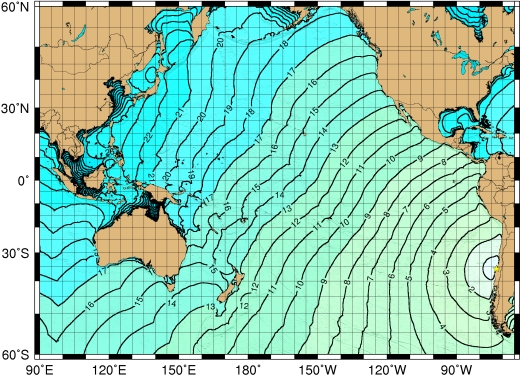Tsunami triggered by the Chilean Earthquake
28 February 2010
At 2:34 p.m. on 27 February 2010 (Hong Kong Time), an earthquake of magnitude 8.8 occurred over the coast of central Chile. It triggered a pacific-wide tsunami that affected quite a number of places including the western coasts of South America and North America, many Pacific islands, Hawaii and Japan. According to the Pacific Tsunami Warning Center, a tsunami height of 2.3 m was recorded at Talcahuano over the coast of Chile, while the island of Maui in Hawaii, situated about 11,000 km from the epicentre, registered a tsunami of about 1 m.
The expected time of tsunami arriving at Hong Kong was about 6 p.m. on 28 February (refer to the Tsunami Travel Time Chart). However, no significant fluctuation in the sea level had been observed at Hong Kongs tide gauges around that time.
In the past century, more than 900 tsunami events were observed or recorded worldwide. Among these events, around 150 tsunamis brought about casualties or damage, most of them affecting areas within one thousand kilometres of the source. A few large earthquakes triggered tsunamis which swept across the entire Pacific and caused destruction at distant coasts. The magnitude 9.5 Chilean earthquake in 1960 brought significant loss of life and property to Hawaii and Japan. On that occasion, a tsunami height of 0.3 m was recorded in Hong Kong, the highest level observed since instrument record began in Hong Kong.

Tsunami Travel Time Chart for the Chilean earthquake occurring on 27 February 2010, generated by the Hong Kong Observatory (The star is the epicentre. Unit: hour)